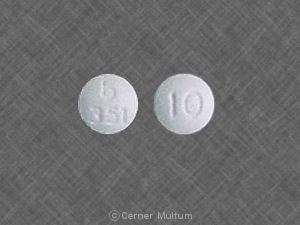Leflunomide Dosage
Medically reviewed by Drugs.com. Last updated on Jan 6, 2025.
Applies to the following strengths: 10 mg; 20 mg; 100 mg
Usual Adult Dose for:
Additional dosage information:
Usual Adult Dose for Rheumatoid Arthritis
Loading dose: 100 mg orally once a day for 3 days
Maintenance: 20 mg orally once a day (If not well tolerated, the dose may be decreased to 10 mg orally once a day)
Comment:
- Hematology parameters and liver enzymes should be monitored.
Use:
For the treatment of active rheumatoid arthritis (RA):
- To reduce signs and symptoms
- To inhibit structural damage as evidenced by X-ray erosions and joint space narrowing
- To improve physical function
Renal Dose Adjustments
Caution is recommended
Liver Dose Adjustments
Not recommended
Dose Adjustments
- Due to the prolonged half-life of the active metabolite of this drug, patients should be carefully observed after dose reduction, since it may take several weeks for metabolite levels to decline.
- Reduced dosage may be necessary in patients with mild or moderate adverse reactions.
- The maintenance dosage for the treatment of rheumatoid arthritis depends on the severity (activity) of the disease.
- It may take several weeks for the active metabolite levels to decline due to its prolonged half-life. Patients should be carefully observed after dose reduction.
- If this drug is used in combination with methotrexate or other immunosuppressive agents, avoiding the loading dose may decrease the risk of adverse effects.
Precautions
US BOXED WARNINGS:
- PREGNANCY: This drug is contraindicated in pregnant women. Pregnancy should be excluded before the start of treatment. This drug contraindicated in pregnant women or women of childbearing potential who are not using reliable contraception. Pregnancy should be avoided during therapy or prior to the completion of the drug elimination procedure after discontinuation of therapy.
- HEPATOTOXICITY: Severe liver injury, including fatal liver failure, has been reported in some patients treated with this drug. Patients with preexisting-existing acute or chronic liver disease, or those with serum alanine aminotransferase (ALT) greater than 2 times upper limit of normal (ULN) before initiating treatment, should not be treated with this drug. Using this drug with other potentially hepatotoxic drugs should be done cautiously. Monitoring of ALT levels is recommended at least monthly for 6 months after starting therapy, and thereafter every 6 to 8 weeks. If ALT is greater than 3 x ULN, therapy should be interrupted while investigating the probable cause of the ALT elevation.
Safety and efficacy have not been established in patients younger than 18 years.
Consult WARNINGS section for additional precautions.
Dialysis
Studies have indicated that the active metabolite of leflunomide (M1) is not removed by hemodialysis.
Other Comments
Administration advice:
- The treatment should be initiated and supervised by specialists experienced in the treatment method.
- Tablets should be swallowed whole with sufficient liquid.
- This drug may be administered with or without food.
- Therapeutic effects become apparent after 4 to 6 weeks of therapy and symptoms may continue to improve for up to 4 to 6 months.
General:
- The primary active metabolite of this drug (M1) has a half-life of approximately 2 weeks.
- Doses should not exceed 20 mg per day. Studies have shown a greater incidence of side effects at 25 mg per day.
- In the event of any serious drug toxicity, including hypersensitivity, consult the manufacturer product information for the elimination procedure.
Frequently asked questions
More about leflunomide
- Check interactions
- Compare alternatives
- Pricing & coupons
- Reviews (118)
- Drug images
- Side effects
- During pregnancy
- Drug class: antirheumatics
- Breastfeeding
- En español
Patient resources
Other brands
Professional resources
Other brands
Related treatment guides
See also:
Further information
Always consult your healthcare provider to ensure the information displayed on this page applies to your personal circumstances.


